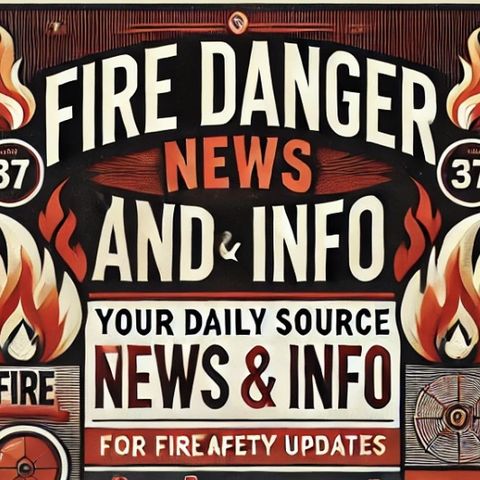Combating Wildfires: USGS Leads the Way with Cutting-Edge Fire Science

Descarga y escucha en cualquier lugar
Descarga tus episodios favoritos y disfrútalos, ¡dondequiera que estés! Regístrate o inicia sesión ahora para acceder a la escucha sin conexión.
Combating Wildfires: USGS Leads the Way with Cutting-Edge Fire Science
Esta transcripción es generada automáticamente. Ten en cuenta que no se garantiza una precisión absoluta.
Descripción
Wildfires in the western United States have become increasingly severe, drawing urgent attention to the pivotal role of fire science in effectively combating these natural disasters. The United States Geological...
mostra másThe western United States is particularly susceptible to wildfires due to its vast forested areas, frequent drought conditions, and rising temperatures driven by climate change. These factors create a perfect storm for fires to ignite and spread rapidly, threatening ecosystems, wildlife, human communities, and valuable resources.
USGS fire science focuses on several core areas to combat these blazes effectively. Firstly, understanding fire behavior is crucial for predicting how fires will spread and evolve. USGS researchers use advanced modeling techniques to simulate fire scenarios, helping to forecast fire paths and potential impacts. This predictive capability is vital for emergency management, allowing agencies to make informed decisions regarding evacuations, resource allocation, and firefighting strategies.
Another critical aspect of USGS's work is studying the ecological effects of wildfires. Fires are a natural part of many ecosystems and play a vital role in processes such as nutrient cycling and habitat renewal. However, the increasing intensity and frequency of wildfires threaten to disrupt these natural processes. USGS scientists investigate the long-term ecological impacts of fires, assessing changes in vegetation, wildlife populations, and soil health. This research helps guide restoration efforts and land management practices to ensure ecosystems recover and thrive after a fire.
The integration of technology is also a hallmark of USGS's approach to fire science. Remote sensing technologies, such as satellite imagery and unmanned aerial vehicles (UAVs), provide real-time data on fire locations, intensity, and spread. This information is invaluable for on-the-ground firefighting efforts and allows scientists to monitor changes in landscapes over time. Additionally, the USGS collaborates with various organizations and agencies to develop geospatial tools and applications that enhance wildfire response capabilities.
One significant advancement in USGS fire science is the use of LiDAR (Light Detection and Ranging) technology to create detailed maps of vegetation density and topography. These maps help identify areas at high risk for ignition and guide fuel management practices, such as controlled burns, to reduce the likelihood of catastrophic fires.
Public education and engagement also play a vital role in fire prevention and response. The USGS actively disseminates its findings and resources through its Wildland Fire Science webpage, providing valuable insights into wildfire dynamics and science. By fostering a better understanding of fire science among the public and decision-makers, USGS aims to promote responsible land management practices and community resilience in fire-prone areas.
As climate change continues to challenge traditional fire management methods, the work of USGS fire science becomes increasingly critical. By leveraging scientific research, innovative technologies, and collaborative efforts, the USGS is helping to pave the way for a future where communities can coexist safely with the evolving nature of wildfires. Through their dedicated research and outreach, USGS aims to reduce the devastating impacts of wildfires on both natural landscapes and human lives, ensuring a more sustainable and resilient future for the western United States.
Información
| Autor | QP-4 |
| Organización | William Corbin |
| Página web | - |
| Etiquetas |
Copyright 2024 - Spreaker Inc. an iHeartMedia Company
